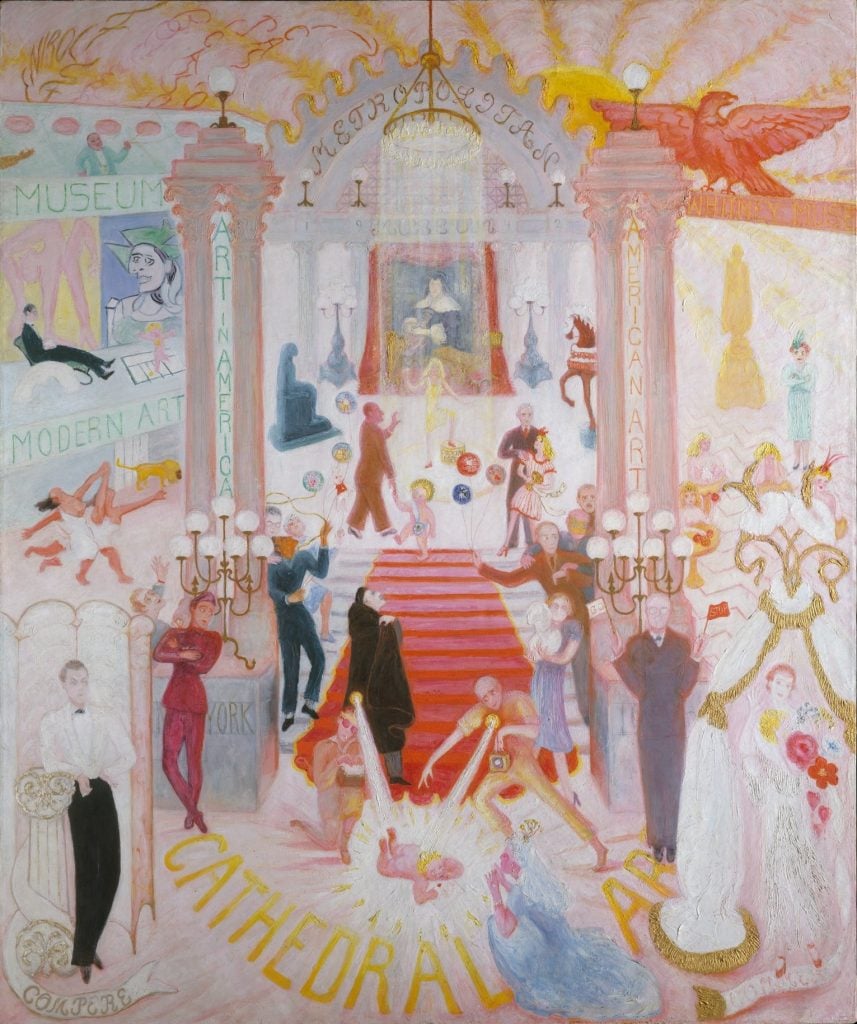Art History
Art We Love: An Exuberant Altar to New York’s Art World
On Florine Stettheimer’s 'Cathedrals of Art' (1942).

On Florine Stettheimer’s 'Cathedrals of Art' (1942).

Caroline Goldstein

For an episode of the Art Angle podcast, we asked Artnet News writers and editors to tell us about one work of art that brings them joy. The following is a part of a series of transcripts of the answers. You can listen to the entire podcast on Apple Music, Spotify, or here.
A work that brings me an endless supply of joy is one that will be familiar to many art lovers. Florine Stettheimer’s Cathedrals of Art from 1942, a monumentally-scaled painting created as part of a series spotlighting the cultural, societal, and economic hubs of New York City, which also includes works dedicated to Wall Street, Broadway, and Fifth Avenue, and are all love letters to Stettheimer’s beloved city, which is my adopted home now, too.
I first encountered this work as a reproduction in a book, but there’s nothing quite like seeing it in the flesh, at the Metropolitan Museum’s Fifth Avenue location. The composition is dynamic, with characters— including art critics, tuxedo-clad waiters, and fabulous socialites—flitting about the entirety of the canvas, which features nods to the city’s most august museums: including MoMA, the Met itself, and the Whitney Museum of American Art, with reproductions of famous works by Picasso and Rousseau.
The center of the work is dominated by a red carpet rolled out over a marble staircase. A gleaming chandelier casts an ethereal aura over the scene of earthly delights. What strikes me most about the work is its joviality—you can practically hear music playing from the canvas itself, and it’s painted in soft colors of pink, green, and yellow that to me evoke Rococo paintings like Watteau’s fantastical Pilgrimage to Cythera.
This image is a visual representation of what I always imagined the art world in New York to be, a sort of frothy fever dream of theater, glamour, and intellect. One of the best parts too of the work is that there are endless insider references to cultural figures and philosophies of the time (and here I must nod to my friend and colleague Katie White, who’s written beautifully about the work for Artnet News). Given the fact that it takes inspiration from religious altarpieces, I know I’m not alone in feeling drawn to worship at these famed Cathedrals of New York City.